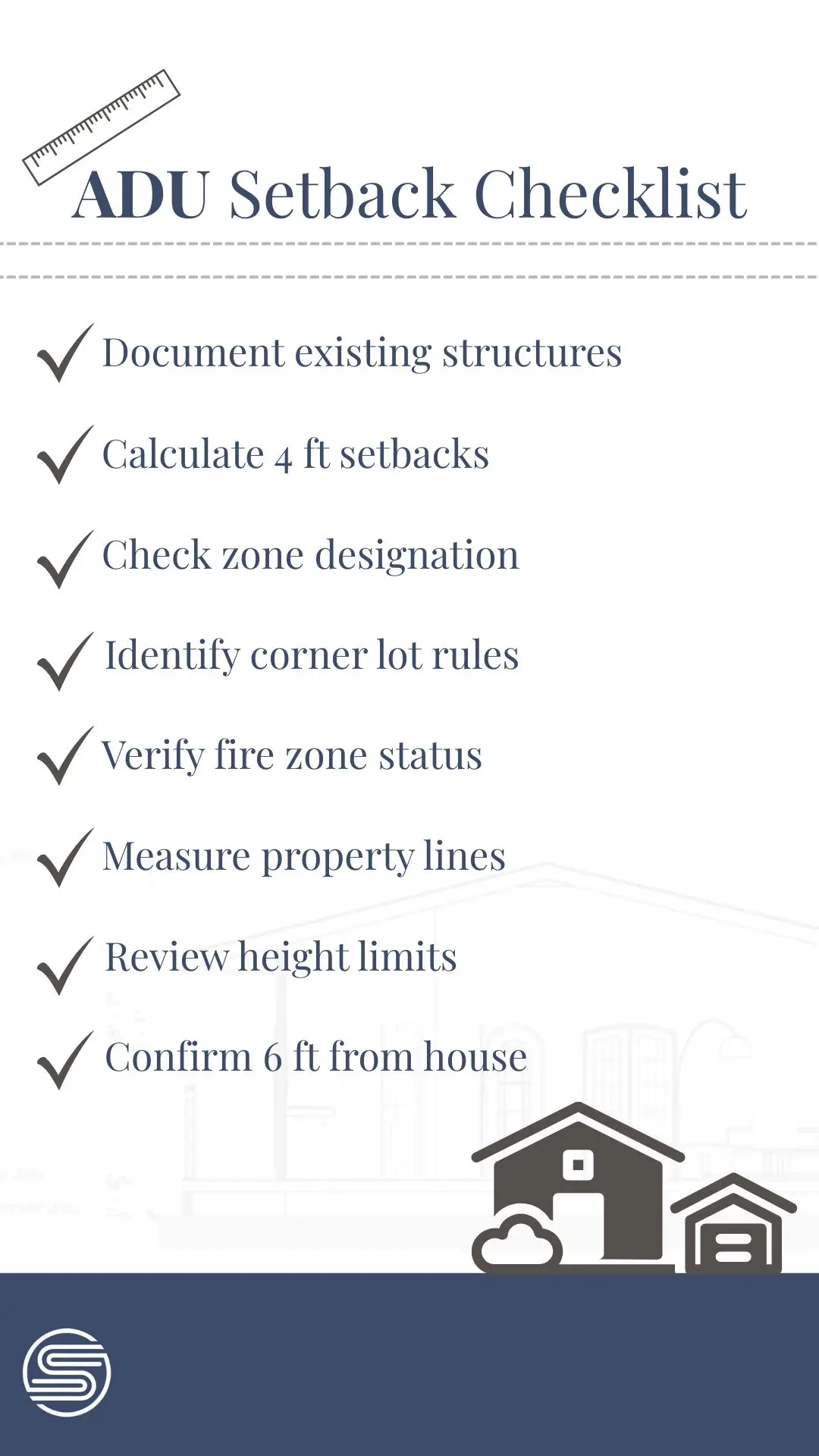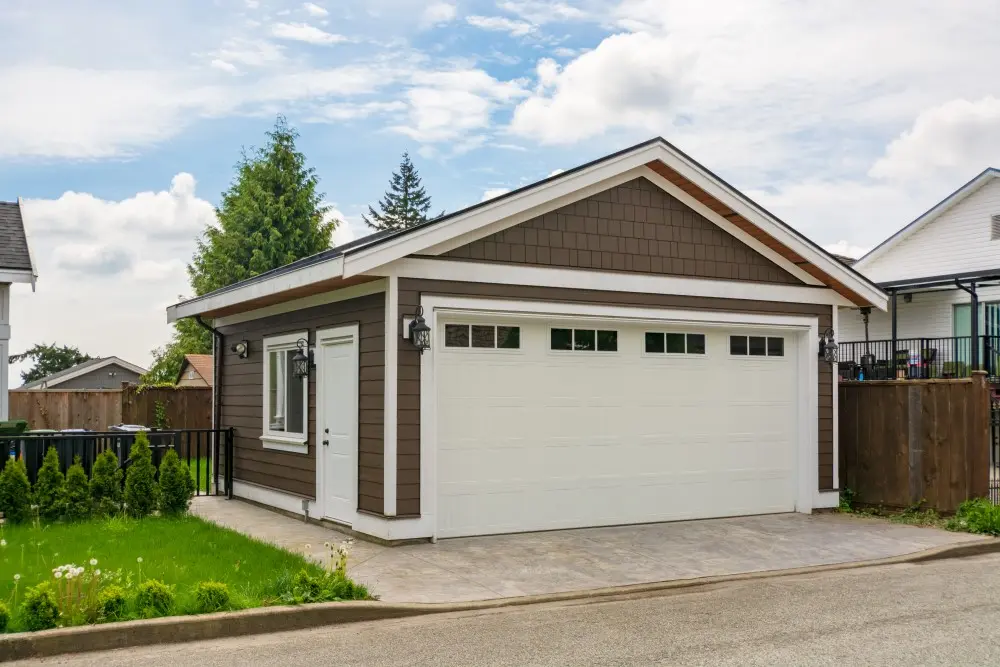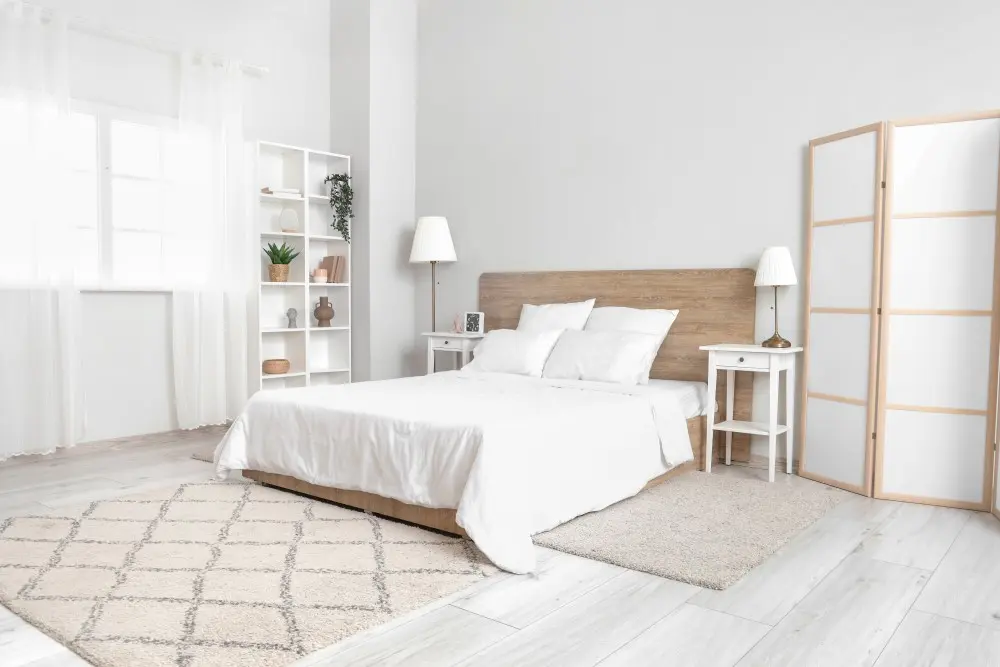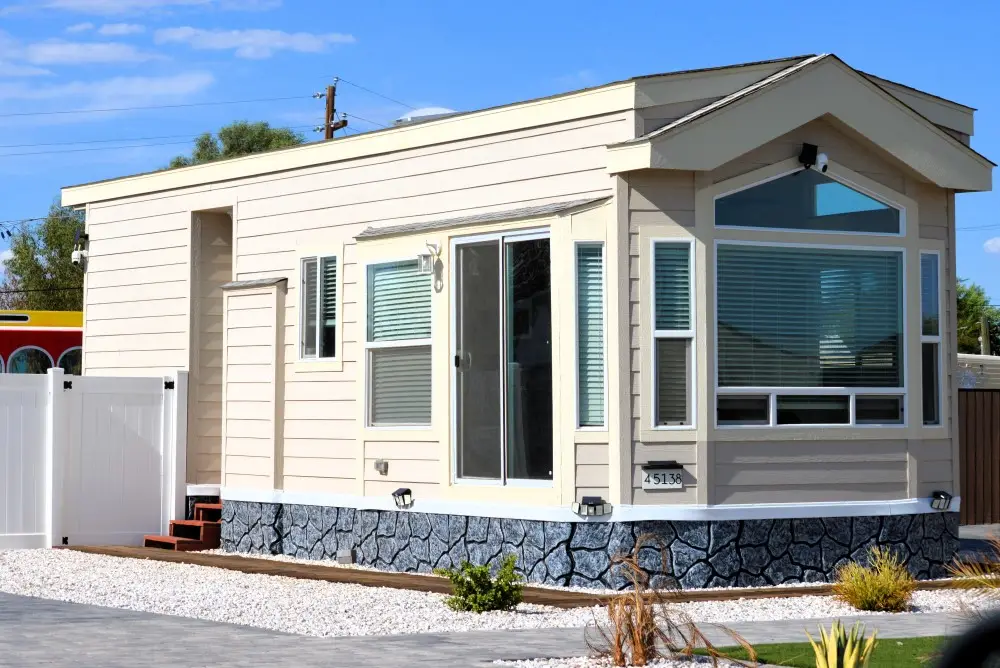Many San Diego homeowners exploring ADU construction hit a roadblock when they discover setback requirements that seem to limit their buildable space. We understand that these regulations can feel overwhelming, especially when trying to maximize your property's potential while staying compliant with city codes.
As San Diego ADU design service experts, the team at Streamline Design & Permitting navigates these setback regulations daily and knows exactly how to maximize your buildable area within legal limits.
This guide breaks down the current 2025 ADU setback requirements in San Diego, explains exceptions and workarounds, and shows you how different ADU types can help you work within your property's constraints.
Understanding San Diego ADU Setback Requirements in 2025

San Diego's ADU setback regulations align with California state law AB 2221 and local ordinances to make accessory dwelling units more accessible for property owners. These rules determine the proximity of your ADU to property lines, existing structures, and streets.
Basic Setback Distances
According to San Diego Municipal Code Chapter 14, Article 1, Division 3, here are the fundamental requirements:
- Side and rear setbacks: There is a 4-foot minimum from property lines for new detached ADU construction. This applies to both interior side yards and rear yard setbacks.
- Front yard setback: Must match your zone's existing requirements. Most residential zones require 15 to 20 feet, but this varies by specific zoning designation.
- Street side yard: There is a 4-foot minimum or your zone's requirement, whichever is less. Corner lots benefit from this reduced requirement on the street-facing side.
- Distance from main house: Detached ADUs need at least 6 feet of separation from the primary dwelling unit for fire safety and access.
Note: These baseline requirements apply to standard situations. Special provisions and exceptions can significantly reduce or even eliminate certain setback requirements.
California's Flexible Approach
The setback law in California gives local jurisdictions authority within state guidelines, and San Diego has implemented some of the most homeowner-friendly ADU regulations. While other California cities may require larger setbacks, San Diego's 4-foot minimums help maximize buildable space on smaller lots.
While these basic requirements are the foundation, many properties qualify for exceptions that can significantly expand your buildable area. We’ve outlined what you need to know.
How Property Conditions Affect Your ADU Setbacks
Not all properties are under the same setback requirements. Your lot's unique characteristics, zoning, and surrounding properties all influence what's possible for ADU development.
Corner Lots and Street Frontage
Corner properties have additional street-side yard requirements, but they often benefit from flexibility on interior sides. The 4-foot street-side minimum helps property owners maximize their buildable area while ensuring the property fits into the neighborhood’s aesthetic.
Important: If your attached or detached ADU faces a street, maintaining proper setbacks ensures emergency vehicles can access the property and preserves sight lines for traffic safety.
Adjacent Residential Properties

When building next to other residential property, height matters significantly:
- ADUs under 16 feet tall can use the standard 4-foot setbacks.
- ADUs over 16 feet require 4-foot minimum setbacks, even if building codes would otherwise allow zero lot line construction.
- Two-story ADUs adjacent to single-story homes may face additional restrictions.
High Fire Hazard Severity Zones
Properties in these zones face strict requirements regardless of structure height. According to the California Fire Code, mandatory 4-foot setbacks apply to all ADU construction, and brush management zones may require even greater clearances.
Note: Recent California ADU laws, including AB 2221 allow ADUs under 800 square feet to encroach into front setbacks, making narrow lots more viable. San Diego has fully implemented these provisions as of 2025.
We know these conditions may seem limiting, but experienced drafters familiar with local nuances can help you identify the optimal ADU placement for your specific lot.
Smart Strategies for Different ADU Types
The type of ADU you choose dramatically impacts your setback requirements. This decision can be the key to making your project feasible.
Making Conversions Work
Garage conversions are the most flexible in terms of setbacks. For example, your existing garage can become an ADU even if it sits at the property line, something new construction couldn't achieve. The same applies to converting existing accessory structures, such as workshops or storage buildings.
Attached ADUs sharing walls with your existing single-family residence only need proper setbacks for the new portions. This is an ideal strategy if you have limited side yard space but can extend toward the rear.
The 150-Square-Foot Exception
Converting existing structures? California ADU regulations allow adding up to 150 square feet solely for ingress and egress without meeting setback requirements. This provision helps create functional entrances for garage and basement conversions.
Choosing the right ADU type based on your existing structures and setback constraints makes the difference between a feasible and an unfeasible project. This is why we recommend working with a professional.
Navigating Exceptions and Special Provisions
San Diego's ADU ordinance includes several provisions that help homeowners build even when standard setbacks seem prohibitive.
The 800-Square-Foot Rule
One of the most powerful and noteworthy exceptions allows a single ADU of 800 square feet or less to encroach into the front yard setback. This provision makes narrow lots viable for ADU development when rear and side setbacks would otherwise prevent construction. If your property has limited backyard space, this flexibility is especially beneficial.
Cannot-Deny Provisions
According to California state law, local agencies cannot deny an ADU if their development standards would prevent at least an 800-square-foot unit with 4-foot side and rear setbacks. This ensures every residential property has some path to adding an accessory dwelling unit, regardless of lot constraints.
Working with Non-Conforming Structures
Existing non-conforming structures offer unique opportunities. You can convert or even demolish and rebuild in the same footprint without meeting current setback requirements. This applies to old garages, sheds, or additions that wouldn't meet today's codes but are legally established.
Note: Zero lot line construction is possible to convert existing structures, while new construction typically requires the 4-foot minimum unless fire codes require more.
These exceptions are in place to ensure homeowners aren't unreasonably prevented from adding ADUs, but navigating them requires careful documentation and permitting expertise.
Fire Safety and Building Code Considerations

While San Diego's planning department sets basic setback requirements, fire safety codes can override these minimums, especially in high-risk areas.
Fire Separation Requirements
The California Building Standards Code mandates specific separations for fire safety:
- No windows or doors within 3 feet of property lines
- No eaves within 2.5 feet of property lines
- Equipment such as water heaters and AC units must meet setback requirements
These restrictions are designed to protect both your property and your neighbors from fire spread. Redesigns are expensive, so we always recommend planning your ADU designs in San Diego with these constraints in mind.
Very High Fire Hazard Zones
Properties in these zones face additional requirements beyond standard fire codes. Mandatory 4-foot setbacks apply regardless of ADU height, and brush management zones can extend required clearances significantly. In some cases, the local building department may require even greater setbacks based on specific site conditions.
Sprinkler Systems and Reduced Setbacks
Installing fire sprinklers can sometimes allow for reduced fire separation requirements. For example, if your primary residence already has sprinklers, your ADU will also need them. However, this investment might enable closer placement to property lines in certain situations.
It’s always best to get things right from the start. Working with professionals who know both planning and building code requirements ensures your ADU design accounts for all applicable regulations right away.
Practical Steps to Assess Your Property's ADU Potential
Now that you know setback requirements, here's how to determine what's actually possible on your lot.
Initial Property Assessment
Start by gathering basic information about your property. Visit San Diego's online zoning maps to identify your designation and understand base requirements. Most residential zones allow ADUs, but specific development regulations vary.
Measure your lot dimensions carefully and note existing structures' distances from property lines. This includes your main house, garage, sheds, and any permanent provisions like decks or patios. Document everything thoroughly, as you may need retroactive building permits for unpermitted structures you want to convert.
Checking Special Conditions

Verify if your property sits in a Very High Fire Hazard Severity Zone using city fire hazard maps. Properties in the coastal overlay zone face additional requirements that can impact both setbacks and the building permit process.
Look for existing non-conforming structures that could become conversion candidates. For example, that old garage at your rear property line might be your best ADU opportunity, even if new construction couldn't go there.
Benefits of Professional Evaluation
While homeowners can conduct preliminary assessments, professional drafters identify opportunities that may not be obvious. They know which exceptions apply and how to maximize your floor area ratio within setback rules.
If your property lines seem unclear, we recommend getting a professional survey. Accurate measurements prevent expensive, frustrating mistakes and ensure your ADU meets all requirements for permit approval.
The setback requirements for an ADU in California depend on local ordinances, and San Diego's are among the most flexible, but proper documentation is essential to each project’s success.
Bringing Your ADU Vision to Life
San Diego's ADU setback requirements, while they may seem complex initially, offer numerous pathways to successful development through strategic ADU type selection and careful site planning. The city's 4-foot minimum setbacks, combined with exceptions for conversions and smaller units, mean most properties can accommodate some form of junior accessory dwelling units or standard ADUs.
Streamline Design & Permitting specializes in navigating San Diego's ADU setback requirements and maximizing buildable space within legal limits. Our expert drafting team knows exactly how to position your ADU for optimal space utilization while meeting all city and fire safety codes.
Allow us to take on the process for you so you can continue to enjoy your property without stress. Contact us today for a professional assessment that identifies the best ADU solution for your property's unique constraints and opportunities.












